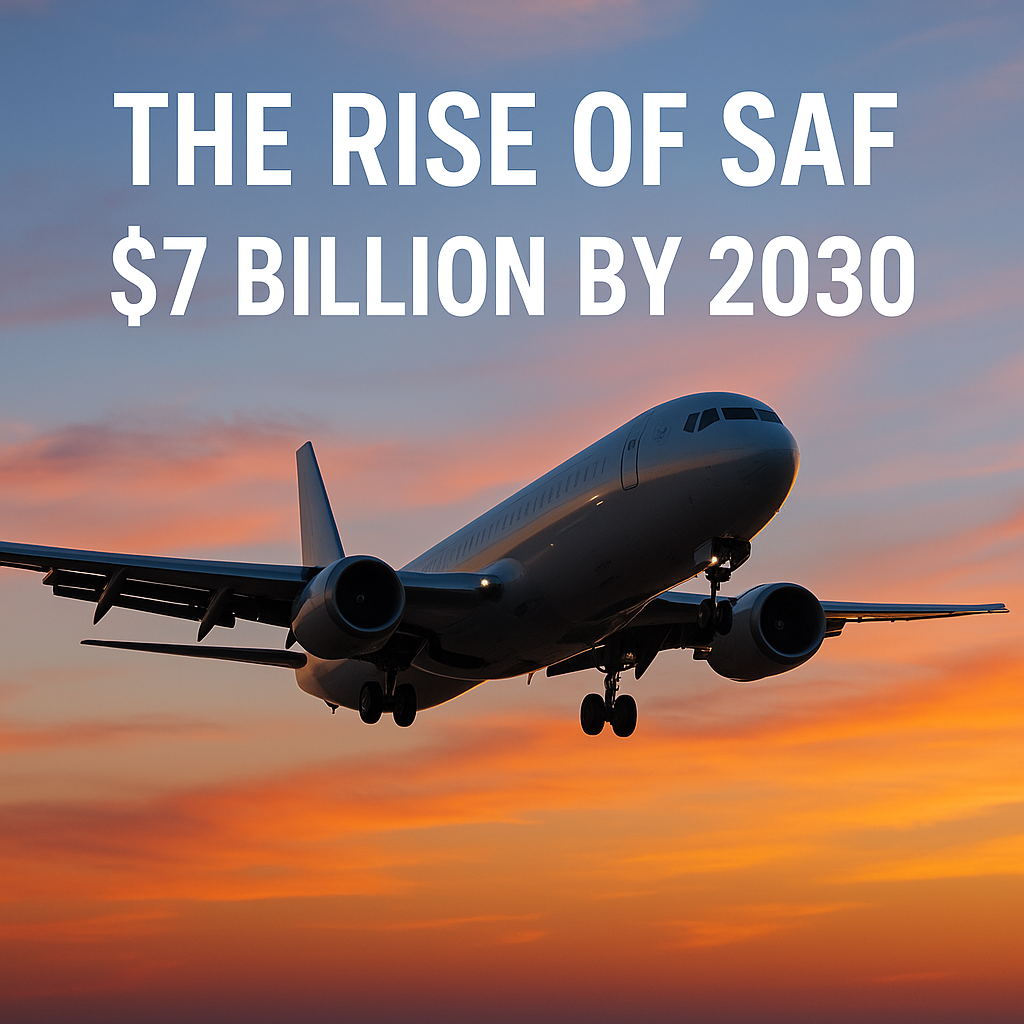
The U.S. sustainable aviation fuel (SAF) market is set to grow significantly, expected to hit around $7 billion by 2030. Starting from less than $1 billion in 2024, this growth shows a yearly increase of 46.8%, highlighting the aviation industry’s focus on reducing carbon emissions and the rising need for cleaner energy.
Driving Forces Behind SAF Market Expansion
Several key factors are propelling this rapid growth:
Environmental Concerns: Heightened awareness of carbon emissions has accelerated the shift from traditional fossil fuels to sustainable alternatives in both military and civilian aviation sectors.
Government Incentives: The U.S. government’s introduction of tax credits for SAF production and usage has incentivized both producers and consumers to invest in sustainable fuels.
Technological Advancements: Innovations in SAF production methods, such as power-to-liquid and gas-to-liquid technologies, are enhancing efficiency and scalability.
Diverse Production Pathways
SAF can be produced through various methods, each contributing to its scalability and sustainability:
Biofuels: Utilizing organic feedstocks like waste fats and oils.
Power-to-Liquid: Employing renewable electricity to synthesize fuel from green hydrogen and atmospheric CO₂.
Gas-to-Liquid: Converting natural gas into liquid fuels suitable for aviation.
Investment and Infrastructure Development
Achieving the projected growth in SAF production will require substantial investment in infrastructure. A report by renewable fuels producer SKYNRG indicates that to meet global SAF demand, approximately 400 refineries will be needed by 2050, necessitating an investment of around $400 billion.
Want to dive deeper into what SAF is and how it works? Check out our article: How Airlines are Pioneering Green Aviation in 2025

Leave a Reply